As a versatile plant genus, juniper is sometimes used in the kitchen. It can be planted as a hedge and even as a bonsai.

Juniper (Juniperus) is a decorative wood that impresses not only with its extraordinary appearance, but also with its scent and healing ingredients. We show you how to plant and care for juniper correctly and why juniper berries are actually not berries at all.
contents
- Juniper: flower, leaves and characteristics
- Planting junipers: location and procedure
-
Care of the juniper: cutting, fertilizing and Co.
- Watering and fertilizing
- Cut juniper
- Common juniper diseases and pests
- Multiplication
- Is juniper hardy?
- Harvest and use juniper
- Is Juniper Poisonous?
Juniper: flower, leaves and characteristics
The genus juniper (Juniperus) belongs to the cypress family (Cupressaceae). It contains about 80 species, of which only two occur naturally in Central Europe. The remaining
Juniper species Almost all of them are distributed over the entire northern hemisphere - from the Arctic to tropical zones. The evergreen trees or bushes grow upright, creeping or prostrate and give off a strong scent. Their leaves are needle-shaped or scaly, often soft and slightly flattened, but sometimes also very pointed. The white or pink juniper flowers are very small and inconspicuous. The juniper is better known for its cone fruits, which are often referred to as berries. Before the female cones have reached their blue color, they have to mature for up to two years. Since juniper is dioecious, a male and a female specimen are required for fertilization.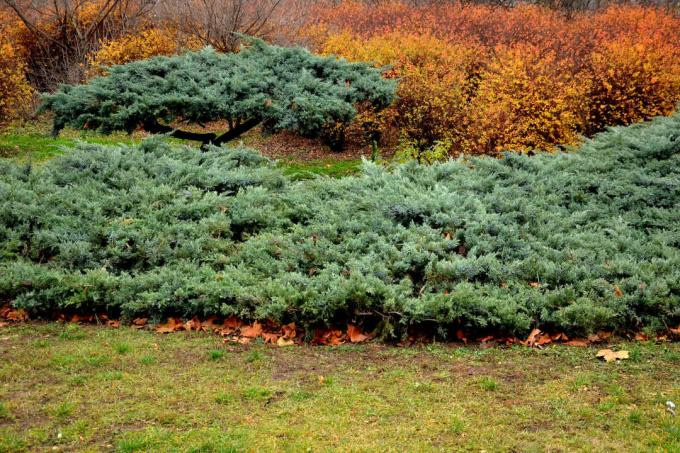
But how big does juniper get? This varies from species to species and can range from a three-foot-high shrub to a ten-meter high juniper tree. The one that we often plant Common juniper (Juniperus communis) reaches an average height of about five to eight meters. In addition to being used as ornamental plants, juniper fruits are also used to make schnapps, essential oils and spices. They are also used as natural remedies. Other names for the juniper are: Feuerbaum, Kranewitt, Queckholter and Machangel.
Tip: The juniper used to be planted on graves. It was believed that through him the souls of the deceased could return to life. It is not for nothing that the name Wacholder is reminiscent of wax holders.
Planting junipers: location and procedure
The genus Juniperus is considered to be very undemanding and robust, which is why a location can be found for every juniper.
Only shade should be avoided: the juniper needs a lot of light in order to grow well. A place in the sun is ideal, partial shade is tolerated. Drought does not bother him much and a lime-rich subsoil is not a problem either. The soil should be well drained, but the juniper will also tolerate a location of alternating moisture.
Tip: If you want to harvest juniper berries, you should plant a female and a male juniper.

The best time to plant junipers is spring, but planting in early autumn is also possible. The distance to other plants depends on the respective species and their growth characteristics. Dig a planting hole at the desired location that is about twice the size of the root ball. Place the juniper ball in a bucket of water so it can soak up. If the soil in the garden is very heavy, you should dig the hole particularly deep. The excavated earth should be mixed with plenty of sand to promote the drainage of the water. Then put the juniper in the hole, fill everything up with soil and press the soil into place. In the next time, the plant should be well watered.
Juniper in the pot: You can also keep some juniper species that remain small in pots and put them on the balcony. Are suitable, for example Juniperus communis ‘Compressa’ or Juniperus squamata "Blue Star". A drainage layer made of potsherds ensures that the water drains off. High-quality potting soil, such as ours, is suitable as a substrate Plantura organic universal soil. It is suitable for many plants and also ensures healthy growth for junipers. Our peat-free, organic soil is not only good for plants, but also for the environment. Mix the soil with a third of sand to further increase the permeability.
Tip: You can also plant juniper as a hedge. To do this, reduce the planting distance and place two juniper plants on a meter of hedge. Column juniper, for example, is a suitable species Juniperus scopulorum.
Care of the juniper: cutting, fertilizing and Co.
There is hardly anything to consider when caring for juniper trees. Although the plants grow slowly, they do not require any additional care measures. Only young juniper plants should still be watered and depending on when they are planted, winter protection can be helpful.
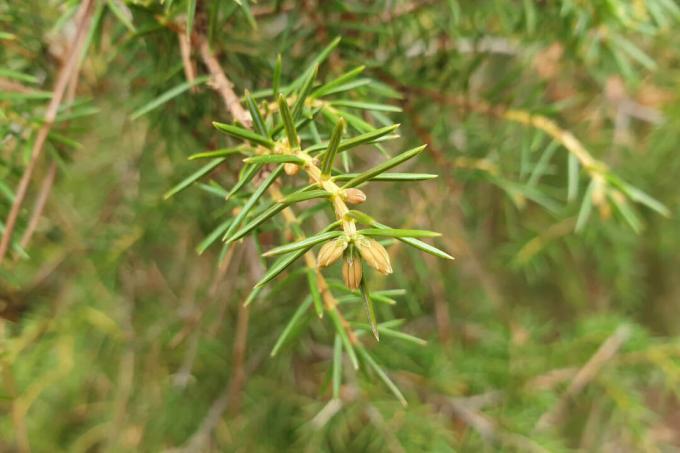
Watering and fertilizing
Since juniper can cope well with drought, larger specimens do not need to be watered. However, freshly planted, young juniper should be regularly supplied with water at the beginning so that it can grow well. In the first few years, water is only poured when it is dry, later not at all. Fertilization is usually not necessary for junipers in a suitable location. Occasionally, a little slow-release fertilizer should be added on sandy soils or in pots. Juniper needs a nutritional composition with little phosphorus and additional magnesium. Because of these special requirements, our Plantura organic rose fertilizer very suitable for the juniper, even if it may sound unusual at first. Our organic fertilizer lasts a long time and is harmless to pets and garden animals. Juniper in the pot should also be repotted occasionally, because the fresh substrate promotes healthy growth.
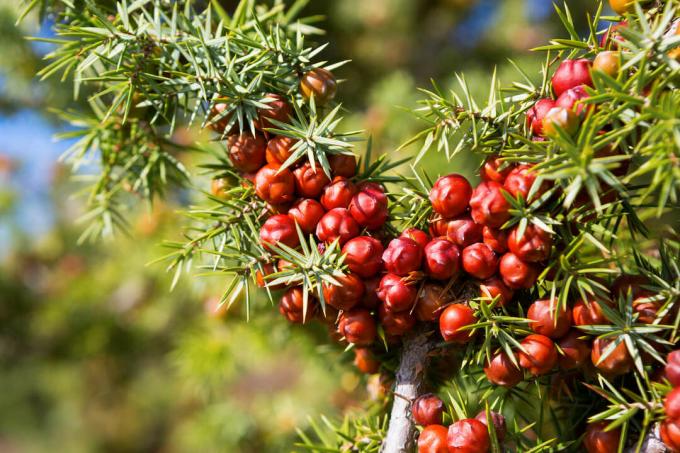
Cut juniper
Juniper is easy to cut and decorative shapes can be created. However, it grows slowly and it takes longer to sprout again. Although there is no need to prune juniper, the pruning will encourage branching. However, you should not cut into the old wood: after radical pruning, older junipers hardly sprout. A large, healthy plant can also be pruned back a little more at certain points. However, the re-emergence is not guaranteed. Remove any visible dead branches in spring and regularly prune back the young juniper. Since juniper needles are very pointed, you should definitely wear gloves when cutting.
Common juniper diseases and pests
Although it is very robust, juniper can also be attacked by diseases or pests.
- Shoot death (Phomopsis juniperivora): This disease manifests itself as brown discolored needles and small black fruiting bodies of the fungus that causes the disease. Cut off all affected parts of the plant generously.

- Juniper Moth (Argyresthia trifasciata): If the shoots turn brown from the tips, there may be an infestation of the juniper terminator moth. You should get advice from a plant protection service when combating it.
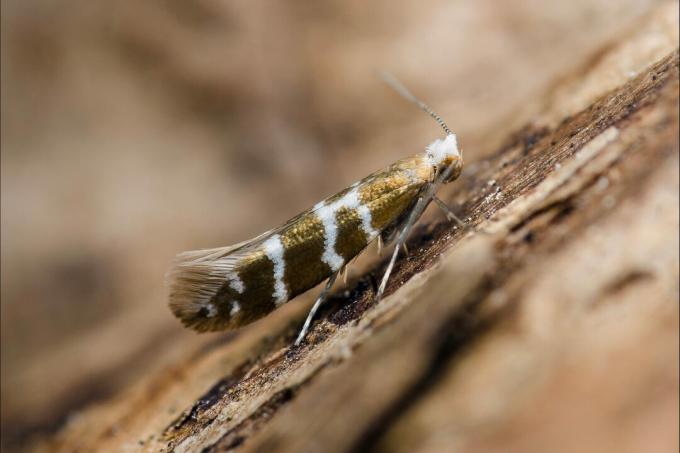
- Rust fungi (Gymnosporangium): Hawthorn grating, pear grating or juniper blister grating are caused by various rust fungi. They can be recognized by the yellowish, tongue-shaped fruiting bodies and swollen shoots. Here, too, the infected parts of the plant should be cut off and disposed of with household waste. The fungi spread to other plants, such as pear trees.
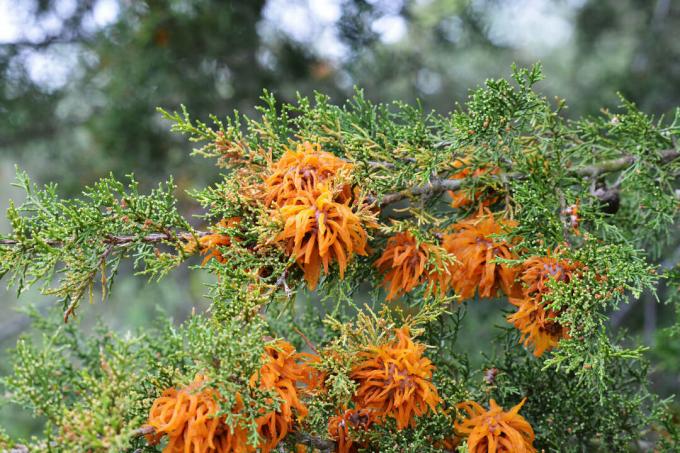
Multiplication
To propagate juniper, it is best to resort to cuttings. To do this, tear off a young shoot from the main shoot in late summer. This should already be slightly lignified, but still green at the base. Cut off the bark tongue that was created when it was torn off with a sharp knife and remove the tip of the shoot and the needles in the lower area. Then put the cutting in a mixture of universal soil and sand and place the whole thing in a bright place with high humidity at around 20 ° C. The substrate should always be kept moist. Roots should have formed by spring so that the juniper can be repotted or planted out.
Tip: Make sure to use a cuttings from the main shoot for propagation. The shoots of conifers remember their direction of growth. A side shoot will therefore not grow straight upwards after propagation.
Is juniper hardy?
A well-rooted juniper does not need protective measures in winter. Young plants can be protected with a layer of mulch. If you keep the juniper in the pot, you can put it on a block of wood for safety and wrap it in jute.
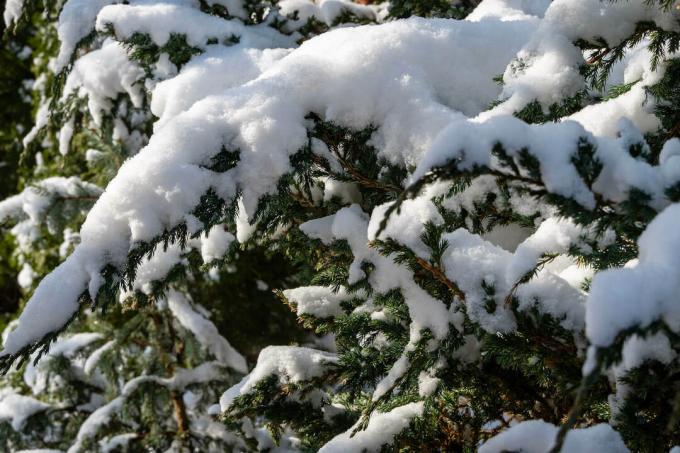
Harvest and use juniper
Common juniper (Juniperus communis) Use. The cone berries of the female juniper are ripe as soon as they turn dark blue. This occurs two years after pollination. They are used, among other things, for juniper tea or to refine schnapps. Other species, such as the sad tree (Juniperus sabina), however, are poisonous in all parts. Juniper trees contain essential oils and are also used to flavor meat.
Tip: The Sade tree was also used in medicine in the past. There he was used, among other things, for cleaning wounds, for breathing difficulties and for abortion.
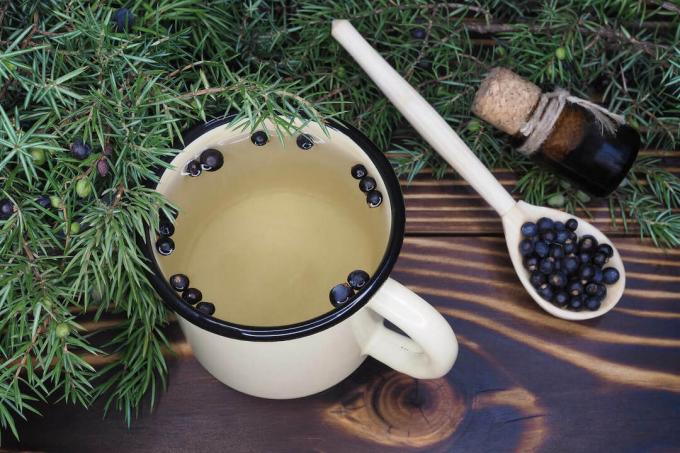
Is Juniper Poisonous?
Juniper species are slightly poisonous in some, sometimes in all, parts of the plant. The berries of the common juniper were previously used in medicine. However, they also contain substances which, in excess, can lead to irritation in the gastrointestinal area or on the skin. Juniper should not be consumed during pregnancy or if you have kidney problems. Excessive consumption of juniper is also toxic for pets. The tree is even classified as poisonous and can cause severe irritation and blistering through skin contact alone. Vomiting, diarrhea and bladder pain are some of the symptoms of poisoning after eating berries from the Sead tree.
Junipers and heather bushes like to share the same sunny, rather dry and sandy location. the Bell heather is also very popular in the garden and we show you how to care for it.



